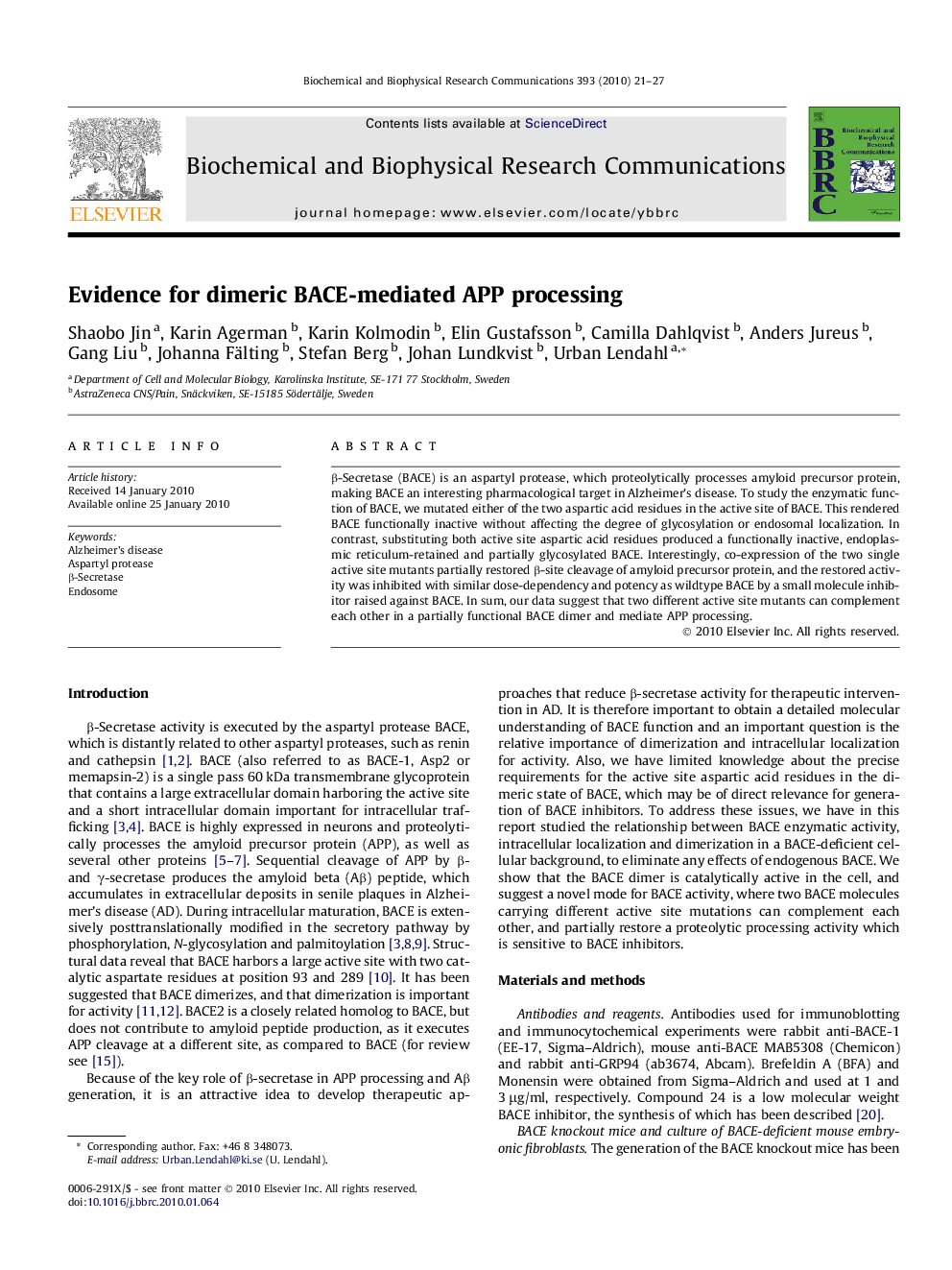| Article ID | Journal | Published Year | Pages | File Type |
|---|---|---|---|---|
| 10765149 | Biochemical and Biophysical Research Communications | 2010 | 7 Pages |
Abstract
β-Secretase (BACE) is an aspartyl protease, which proteolytically processes amyloid precursor protein, making BACE an interesting pharmacological target in Alzheimer's disease. To study the enzymatic function of BACE, we mutated either of the two aspartic acid residues in the active site of BACE. This rendered BACE functionally inactive without affecting the degree of glycosylation or endosomal localization. In contrast, substituting both active site aspartic acid residues produced a functionally inactive, endoplasmic reticulum-retained and partially glycosylated BACE. Interestingly, co-expression of the two single active site mutants partially restored β-site cleavage of amyloid precursor protein, and the restored activity was inhibited with similar dose-dependency and potency as wildtype BACE by a small molecule inhibitor raised against BACE. In sum, our data suggest that two different active site mutants can complement each other in a partially functional BACE dimer and mediate APP processing.
Related Topics
Life Sciences
Biochemistry, Genetics and Molecular Biology
Biochemistry
Authors
Shaobo Jin, Karin Agerman, Karin Kolmodin, Elin Gustafsson, Camilla Dahlqvist, Anders Jureus, Gang Liu, Johanna Fälting, Stefan Berg, Johan Lundkvist, Urban Lendahl,
